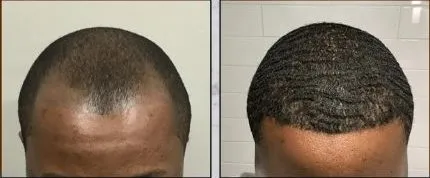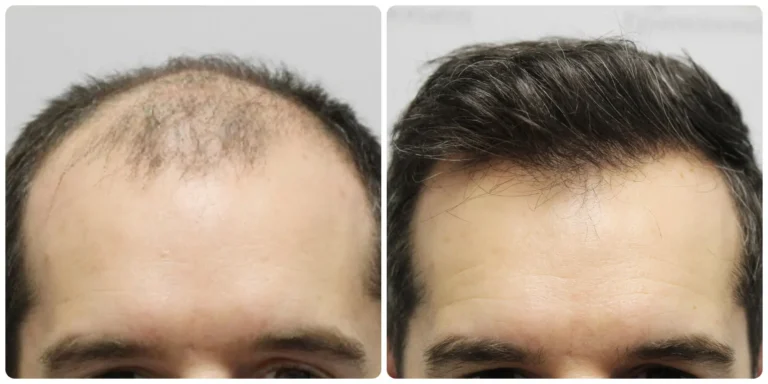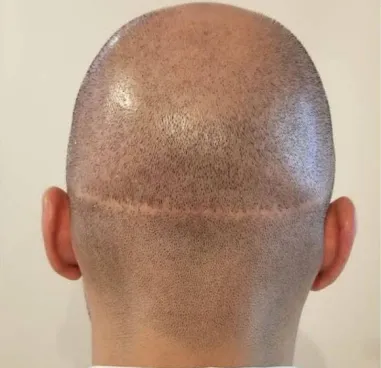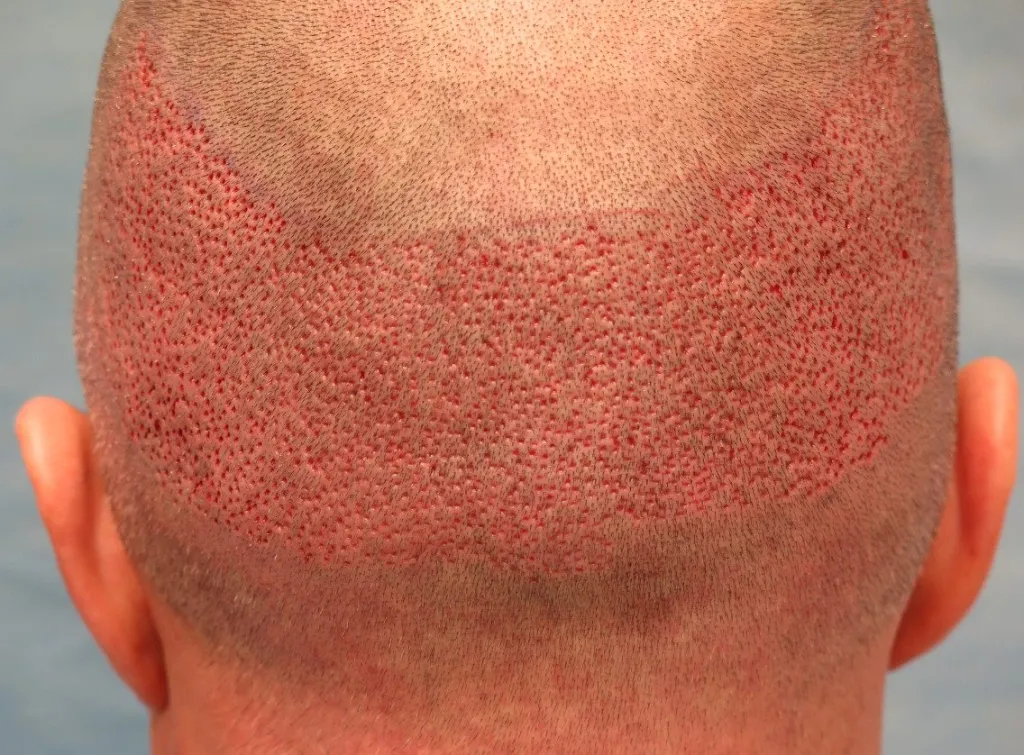Different Approaches to Transplanting Grafts
Hair transplantation is a surgical procedure designed to restore hair to areas of the scalp that are thinning or balding. The process involves harvesting hair follicles (grafts) from a donor area (typically the back or sides of the head, where hair is more resistant to balding caused by DHT) and transplanting them to the balding or thinning areas. There are several techniques for performing hair transplants, each with its own method of harvesting and implanting grafts. A hair graft is a small piece of scalp tissue containing 1-4 hairs, transplanted from a donor area (usually the back of the head) to a balding area. It’s the fundamental unit in hair transplant surgery. The main approaches include Follicular Unit Transplantation (FUT), Follicular Unit Extraction (FUE), and Direct Hair Implantation (DHI).


Hair Transplant Procedures: Before and After
Follicular Unit Transplantation (FUT)
How It Works
- In the FUT method, a strip of skin containing hair follicles is surgically removed from the donor area of the scalp.
- The donor site is then stitched closed, leaving a linear scar.
- The strip is dissected under a microscope into individual follicular units (grafts) containing 1 to 4 hairs each.
- These grafts are then meticulously implanted into tiny incisions made in the recipient area of the scalp.
Advantages
- Higher Graft Yield: Since a large number of follicles can be harvested from the strip, FUT can provide a higher graft yield, which is beneficial for patients requiring extensive coverage.
- Cost-Effective: Generally, FUT can be more cost-effective compared to other methods because it can produce more grafts in a single session.
Disadvantages
- Linear Scar: The most significant downside is the linear scar left on the donor area, which can be noticeable if the hair is cut very short.
- Longer Recovery: The recovery time can be longer, and there may be more discomfort during the healing process.
- In the FUT method, a strip of skin containing hair follicles is surgically removed from the donor area of the scalp.
- The donor site is then stitched closed, leaving a linear scar.
- The strip is dissected under a microscope into individual follicular units (grafts) containing 1 to 4 hairs each.
- These grafts are then meticulously implanted into tiny incisions made in the recipient area of the scalp.

Donor area after FUT procedure
Follicular Unit Extraction (FUE)
How It Works
- In FUE, individual hair follicles are extracted directly from the donor area using a specialized punch tool that creates tiny circular incisions around each follicle.
- These follicles are then implanted into the recipient area using a similar technique to FUT.
Advantages
- No Linear Scar: FUE leaves tiny, almost undetectable scars scattered throughout the donor area, making it a good option for those who prefer short hairstyles
- Quicker Recovery: The recovery time is generally faster and less uncomfortable than with FUT.
- Flexibility: FUE allows for hair to be harvested from different parts of the body (beard, chest) if the scalp donor area is insufficient.
Disadvantages
- Time-Consuming: FUE is more labor-intensive and can take longer to perform, especially in cases requiring a large number of grafts.
- Lower Graft Yield: There is a limit to the number of grafts that can be extracted in one session, which might require multiple sessions for extensive hair loss.
- Cost: FUE is generally more expensive than FUT due to the time and precision required.

Donor area immediately after FUE procedure
Direct Hair Transplantation (DHI)
How It Works
- DHI is an advanced variation of the FUE technique. In this method, hair follicles are extracted individually using a specialized tool, similar to FUE.
- However, instead of creating incisions in the recipient area first, the grafts are implanted directly using a pen-like device called a Choi implanter pen. This device allows the surgeon to make the incision and insert the graft simultaneously.
Advantages
- Precision and Density: DHI allows for more precise control over the angle, direction, and depth of the implanted hair, which can lead to a more natural-looking result and higher hair density.
- Reduced Trauma: Since the grafts are out of the body for a shorter time and handled less, there’s less risk of trauma and damage to the follicles.
- Faster Recovery: The minimally invasive nature of DHI can lead to quicker healing and reduced downtime.
Disadvantages
- Cost: DHI tends to be more expensive than both FUT and FUE because of the advanced technology and skill required.
- Availability: Not all clinics offer DHI, and it requires a highly skilled and experienced surgeon to perform it effectively.
- Limited Graft Numbers: Like FUE, DHI may be more time-consuming and may limit the number of grafts that can be transplanted in one session.



Recipient site immediately after a hair transplant procedure
Each hair transplant method has its own set of benefits and drawbacks, and the best approach depends on your specific needs, hair loss pattern, and personal preferences. A consultation with a qualified hair restoration specialist is essential to determine which method is most suitable for achieving your desired results. Whether you choose FUT, FUE, or DHI, the goal is to restore your hair and confidence with natural-looking, long-lasting outcomes. Prices depend on the clinic, surgeon experience, technique used, the number of grafts needed, and the country where the procedure is done. Surgeons in Turkey and India are known for offering high-quality procedures at lower prices.
Costs in the U.S.
- FUE: $4 to $8 per graft.
- FUT: $3 to $7 per graft.
- DHI: $6 to $10 per graft.
Costs in Mexico
- FUE: Approx. $1.50 to $2 per graft.
- FUT: Approx. $1.75 per graft.
- DHI: $1.50 to $3.50 per graft.
Costs in Turkey
- FUE: $1.50 to $3 per graft.
- FUT: $1 to $2.50 per graft.
- DHI: $2 to $4 per graft.
Costs in India
- FUE: $0.36–$1.20 per graft.
- FUT: $0.30 to $0.90 per graft.
- DHI: $0.72 to $1.80 per graft.
Costs in the U.S.
- FUE: $4 to $8 per graft.
- FUT: $3 to $7 per graft.
- DHI: $6 to $10 per graft.
Costs in Mexico
- FUE: Approx. $1.50 to $2 per graft.
- FUT: Approx. $1.75 per graft.
- DHI: $1.50 to $3.50 per graft.
Costs in Turkey
- FUE: $1.50 to $3 per graft.
- FUT: $1 to $2.50 per graft.
- DHI: $2 to $4 per graft.
Costs in India
- FUE: $0.36–$1.20 per graft.
- FUT: $0.30 to $0.90 per graft.
- DHI: $0.72 to $1.80 per graft.